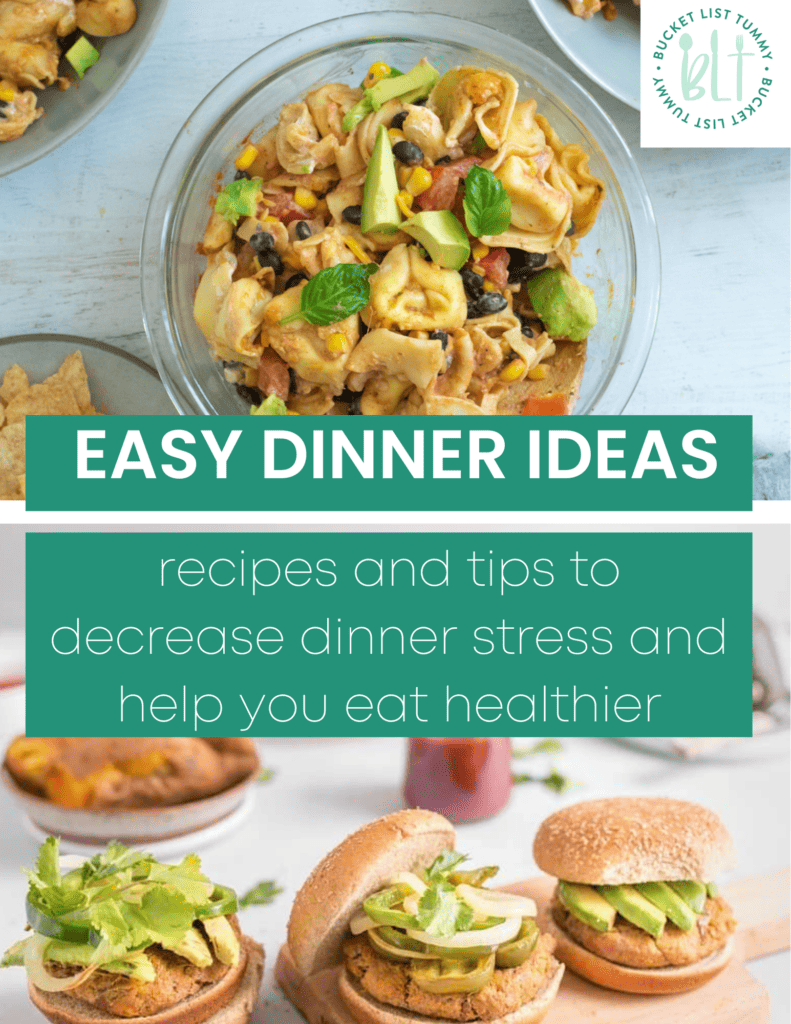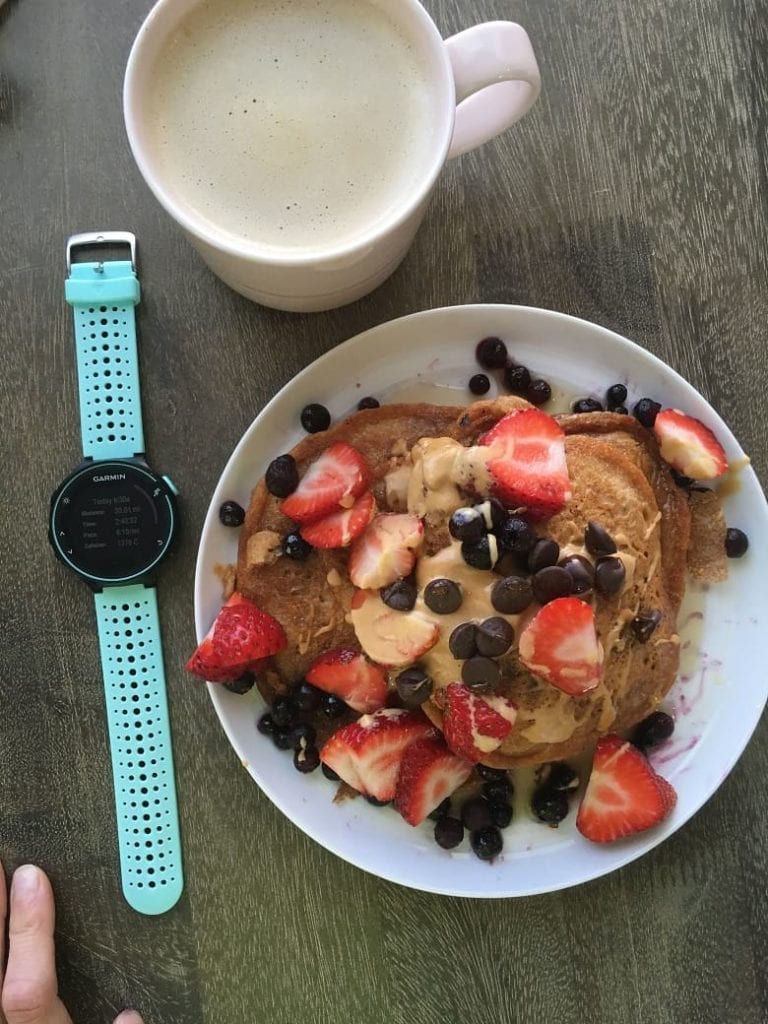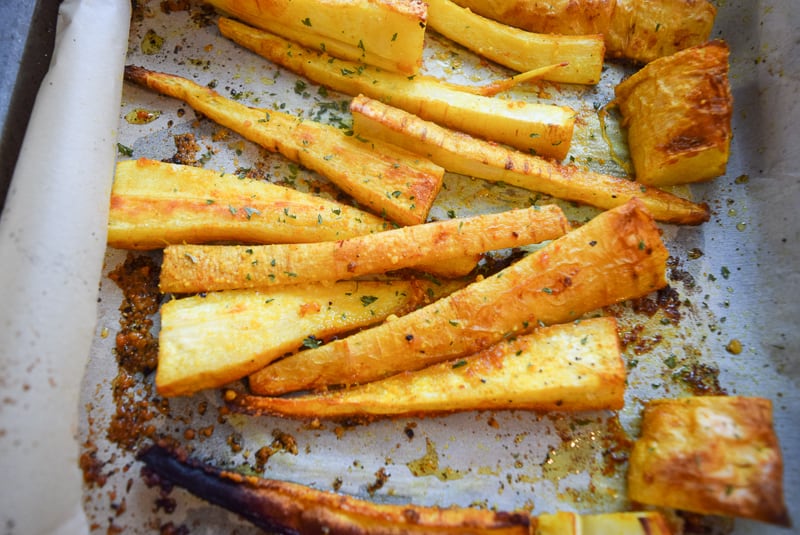Toxic Diet Culture: What It’s Doing To Us Without Us Knowing
- May 27, 2021
- Last Updated: January 31, 2025
- 2 Comments
- Intuitive Eating
What is toxic diet culture and how does it contribute to food rules, food shame and more? Let’s break down why it’s so harmful, how you can spot it, and what you can do about it!

As an Amazon Associate, I may earn from qualifying purchases. You can read more here about our Disclaimer and Privacy Page.
If you’ve been around here—or around any body-positive dietitian—for more than five minutes, you’ve probably heard of diet culture.
And diet culture is toxic!
But if someone asked you to describe to them an example of diet culture, would you be able to dish out the details?
A big part of beating this culture is bringing awareness to what it actually is and the dangers of diet culture.
What is Toxic Diet Culture?
The diet culture definition refers to a belief system that equates thinness to health and moral superiority.
Diet culture is all around us – it’s the media, companies looking to make a profit, magazines, models for clothing, etc.
Wellness culture and the wellness diet is just one of many facets of diet culture. People think they have to eat clean to be healthy.
But are you taught about the risks of clean eating and eating disorders?
It’s almost more fruitful to think about who benefits from diet culture?
It’s typically the diet brands and products trying to sell you something. But they aren’t telling you why fad diets don’t work.
But diet culture isn’t just limited to companies and brands. It gets perpetuated among friends and family who hold these beliefs as well.

On top of this, diet culture incorrectly perpetrates the idea that anyone can achieve a thin body if they eat correctly and exercise enough, which just isn’t correct.
They set you up to feel bad about yourself by encouraging negative self talk and perpetuating feeling guilty about eating.
Why Diet Culture is Toxic
Why is diet culture bad?
It promotes this idea of thinness=health (and don’t be fooled, most of this is monetarily driven and thinness does not equal health).
Diet culture recognizes and publicizes eating fewer calories, sticking to “clean” foods and even cutting out entire food groups in an attempt to achieve this unrealistic ideal.
Instead of showing how to eat like a normal person, diet culture perpetuates ideas of perfection and eating less.

The infiltrated system influences individuals by creating something we call weight bias, which relates to negative attitudes, judgments and beliefs towards people in larger bodies.
This weight bias and weight stigma is traumatizing and actually negatively affects health.
Yes, treating people in larger bodies as less worthy can be detrimental to their health.
Weight stigma becomes internalized, resulting in people believing that their own bodies are not worthy.
They are then less likely to seek out their doctors or medical care, and just the fact that they see themselves as unworthy is stressful and can affect hormones and how they care (or don’t care for) their bodies.

Here’s the catch: diet culture is tricky, and it appeals to certain aspects of current popular culture so that it never goes out of style.
If we look back on past generations, we can see how diet culture reinvents itself—the “ideal body” in the 1950s looked drastically different than the cultural equivalent now.
However, through all of this reinventing, the core of diet culture—that individuals with specifically shaped bodies are healthier and morally superior—remains the same.
Though the presentation of diet culture evolves, restriction is almost always defined as what it means to be healthy.
Hand in hand with this restriction, the concept of balance is completely absent.
Diet culture tells you to overhaul any equilibrium in your life for the sole purpose of reaching a certain body size, regardless of what it takes.

It may take eating one meal a day, skipping meals and missing out on nutrients, exercising for 3 hours a day, forgoing sleep to exercise more and get everything done, etc.
Some of these examples may seem extreme, but diet culture beholds this behavior to win the ultimate prize – a thin body.
Examples of Diet Culture
Some of diet culture’s toxic hiding places are more obvious (and more blatant) than others.
Christy Harrison’s book on diet culture is a great place to start looking for examples of diet culture and understanding the history of diet culture.
Food Marketing – Many industries and companies purposefully market in a fashion that promotes diet culture.
- Food packaging may note the number of calories or grams of protein in a product or make unsupported claims like, “This food will keep you fuller for longer.”
Weight Loss Challenges/ Worksite Wellness – Besides marketing, diets and weight loss challenges are also obvious manifestations of diet culture.
- While these are commonly advertised at gyms or other fitness settings, even workplaces have started to host weight loss challenges.
- Since the main goal of diets and weight loss challenges is explicitly to alter body size (with the intention of “improving health”), it’s easy to group them into diet culture.

Burn More Mentality – Some of diet culture’s hiding places are sneakier, even within the fitness industry.
- For instance, tracking how many calories a certain workout burns or feeling shame for skipping a workout both lead back to toxic diet culture since it’s all about burning more to change our bodies.
- Even terms like “mindful eating” often refer to eating less instead of focusing on how food can meet your body’s physical or emotional needs.
Everyday Acquaintances (Friends and Family) – More casually, diet culture pops up regularly in conversation. Family and friends may mention new diets they’re on or foods they’re avoiding, especially at holidays.

Medical Community/ Weight Bias – Beyond that, many medical practitioners may unintentionally weave diet culture into their work by requiring weigh-ins at appointments or incorrectly recommending weight loss as a treatment for health conditions.
- A phrase that I often recommend my clients to ask is, “Would you prescribe this same treatment for someone in a smaller body?” If not, it’s likely a reflection of weight bias and weight stigma on their part.
Airlines and Waiting Rooms – Have you ever noticed a person in a larger body feeling very uncomfortable in the tiny seats that airlines provide, or in a small seat in the waiting room?
- This is systemic weight bias. We don’t make appropriate products or clothing that can be appropriate for those in larger bodies.
Media and Pop Culture – Beyond interpersonal reactions, pop culture is full of diet culture’s influence. – –
- Plus-sized clothing is much more limited and may even require an upcharge, especially in bridal sizing, which already runs two sizes smaller than normal clothes.
- TV and movie characters usually occupy smaller bodies, which unintentionally reinforces diet culture’s definition of what beauty or success looks like.
Why is Diet Culture Bad?
When we’re so frequently exposed to diet culture, we often internalize its cues without realizing, which largely contributes to how we eat and exercise.
Like we talked about earlier, diet culture operates through restriction, which can manifest as rules or restrictions around food and exercise, resulting in underfueling for exercise.

To pinpoint these rules, ask yourself questions about your eating and exercise habits as well as how your body responds to them.
For example, do you restrict certain foods or at certain times of the day, then end up binging later?
Do you choose foods solely based on their nutrient content?
Do you give yourself unconditional permission to eat, no matter the food or time of day?
If you’re fatigued, will you still force yourself to complete an intense workout, or will you choose a gentler form of movement? Do you suffer from compulsive exercise?
Another significant influence on how we eat and exercise is socioeconomic status.
Nutritious foods and organized physical activity are generally more accessible to those of higher socioeconomic status, creating health disparities that negatively affect impoverished communities.

While much of this relates directly to income and living situation, it is also influenced by occupation.
For instance, individuals of lower socioeconomic status are more likely to be essential workers, meaning they work longer shifts and have more limited access to food while at work, resulting in less access to food and exercise.
All of this plays into our health! So you see, it’s not just what we eat. That is such a narrow view of our health status.
Culture or religion may also play a role in how often we eat or exercise, depending on the tradition. Jews avoid certain foods to maintain kosher, and Muslims fast during certain parts of the year, to name a few examples.
Ethnicity may contribute to food choices, as well, as western cultures tend to care more about weight than non-western cultures.

Food choices based on ethical reasons, such as going vegan to care for the environment or oppose animal cruelty, fall into this category, too.
Some athletes prefer to follow a vegan diet for athletes.
While all of these dietary choices are for upright reasons, make sure that they do not become intertwined with diet culture and turn into an excuse to restrict your food intake.
Finally, your body has the final say in how you eat and exercise.
Your emotions may drive you to pick certain foods or forms of exercise, and other preferences, like those for distinct tastes or textures, do the same.
On top of that, sleep plays a larger role than most people acknowledge.
For one, how rested you are directly plays into your capacity to exercise. Remember that fad diets don’t work.

Actually, dieting as a whole doesn’t work – here’s 7 scientific reasons why diets don’t work.
Beyond that, sleep influences hormone levels, which then communicate hunger (or lack thereof) to the body. If you’re not sleeping much, you’re more likely to be hungrier.
Allow your body to recover from exercise and prioritize those Z’s.
What Can You Do Instead of Diet Culture?
The first step to canceling diet culture from your life is to increase your awareness of what diet culture is. Immerse yourself in intuitive eating resources and learning, and the anti-diet culture paradigm to help reject diet culture.
Approach your food and exercise choices with curiosity. Practice gentle nutrition.
- How do you classify certain foods or forms of exercise?
- Why do you eat certain ways or prefer certain forms of exercise?
- What signs does your body give you when you’re hungry? When you’re full?
My Hunger Ebook would be a great place to start.
Grab Our Meal Prep Ebook to Finally Conquer Meal Prep in the Kitchen

Explore these questions alongside a community that is doing the same. They can hold you accountable to being curious even when falling back into diet talk seems easier.
And if there’s anyone on your social media feeds who makes you feel bad about your weight or what you’re eating, unfollow those accounts and replace them with body-positive content.
You will become more like those you surround yourself with.

Next, act on what your body is telling you to do. Get rid of the cheat days.
Eat the foods your body asks for when it asks for them—and yes, this will likely go against many of the food rules that you’ve probably had for a while.
If your scale makes you paranoid about listening to your hunger cues, throw it away.
The intuitive eating hunger scale should not be treated like a diet.
It’s your turn to trust your body’s internal cues, not external ones, and practice food flexibility.

Making peace with food is a lifelong process and totally worth it!
As part of this process, try new foods or add foods back in that were formerly off-limits.
If you’re nervous about integrating these foods, order them at a restaurant or try it in a safe atmosphere with a friend or family member.
Rejecting the diet mentality is not easy but it’s imperative.
Pick a mode of exercise that makes your body feel good. If you dislike running but do it for the “calorie burn,” try kickboxing or yoga.

While you’re experimenting, have grace with yourself. Not every food or workout will be your favorite, and you will come across foods and modes of exercise that may not make you feel great. Learn from the experience, and move on—this is all new to your body.
Lastly, educate yourself.
Read up on Intuitive Eating and the Health at Every Size (HAES) movement. If you don’t know how to apply this knowledge to your own routine, consider seeing a dietitian or personal trainer, just make sure they’re HAES-aligned.

And when diet culture seems tempting, remember that you’re educating yourself to work past your old habits, not fall back into them.
Practice including more packaged foods into your diet to normalize them – I talk more about this in the whole foods vs. processed foods breakdown.
Explore More Recipes
Intuitive EatingSupport Bucket List Tummy










Like This Content?
Support Bucket List Tummy